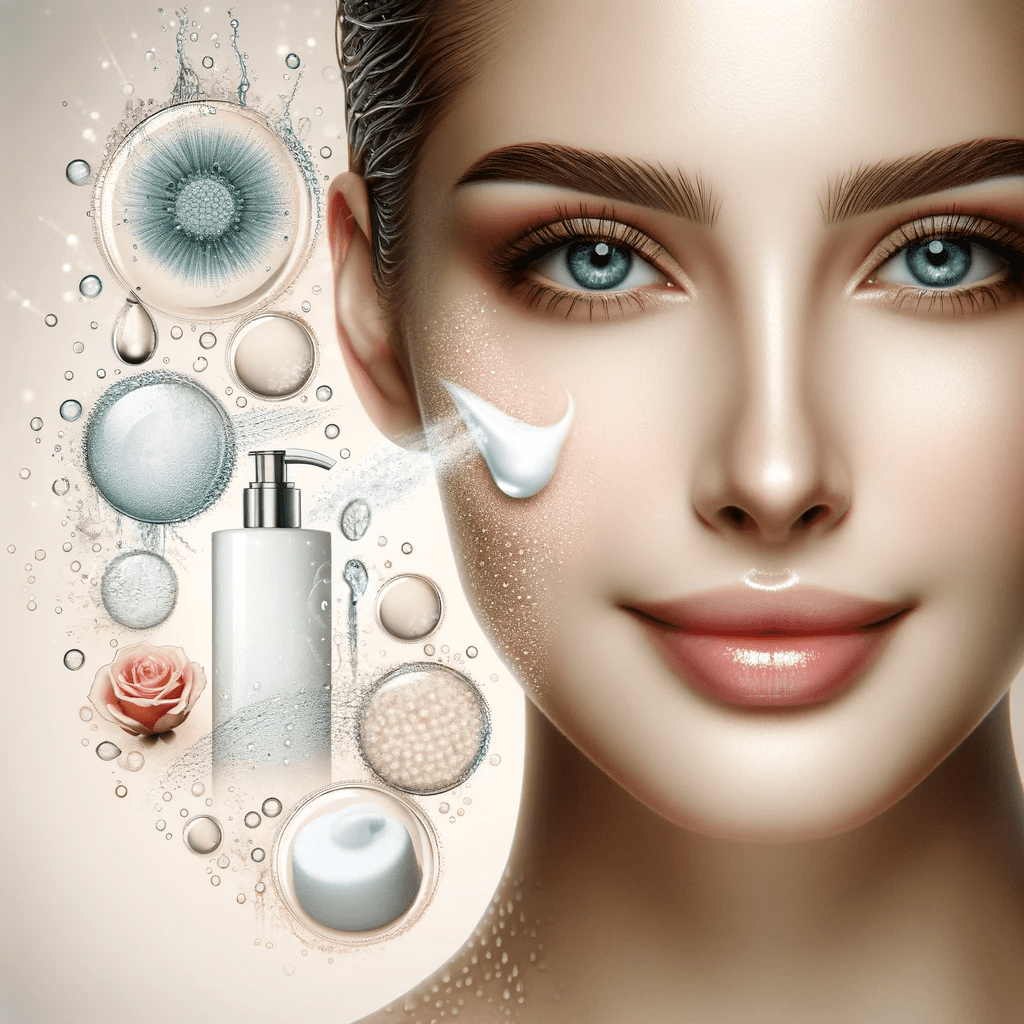Definition
A cleanser promotes a healthy complexion by removing impurities from the skin’s surface. It is a skincare product that eliminates dirt, oil, and makeup.
Expanded Explanation
To maintain healthy skin, use cleansers to gently remove pollutants, excess sebum, and dead skin cells. These can cause clogged pores, acne, and dullness. They are a fundamental step in a daily skincare routine and should be selected according to individual skin types and concerns.
Types of Cleansers
Various cleanser formulations cater to different skin types and preferences:
- Foaming cleansers: These cleansers create a lather when mixed with water, effectively removing oil and dirt. If you have oily or combination skin, these products are perfect.
- Cream cleansers: Rich in texture, cream cleansers gently cleanse and moisturize the skin. These products are perfect for individuals with dry or sensitive skin.
- Gel cleansers are best suited for normal to combination skin types due to their lightweight gel texture.
- Oil cleansers: Oil-based cleansers dissolve makeup and impurities without stripping the skin’s natural oils, making them suitable for all skin types.
Cleansing Techniques
Proper cleansing techniques can optimize the effectiveness of your chosen cleanser:
- Wet your face with lukewarm water before applying the cleanser.
- To properly cleanse your skin, gently massage the cleanser in circular motions.
- After washing, make sure to rinse your skin thoroughly with lukewarm water. Then, gently pat dry with a clean towel.
Examples
Example 1: People with oily skin may opt for a foaming cleanser to effectively remove excess oil and impurities.
Example 2: A double-cleansing routine, incorporating both oil and water-based cleansers, can effectively remove makeup, dirt, and sebum.
Related Terms
Skincare: Skincare involves practices and routines aimed at maintaining the health and appearance of the skin. It encompasses a range of products and techniques tailored to individual skin types and concerns.
Exfoliation: Exfoliation is the process of removing dead skin cells from the outermost layer of the skin. This practice enhances skin texture and tone, promoting a healthier, more radiant complexion.
Visual and Product Aids
External Resources
How to Choose the Right Cleanser: This page “Face washing 101” on the American Academy of Dermatology website provides a detailed guide on how to wash your face effectively to maintain healthy skin. It emphasizes using a gentle, non-abrasive cleanser without alcohol, applying the cleanser with fingertips, avoiding scrubbing, rinsing with lukewarm water, and applying moisturizer if needed. It also advises limiting face washing to twice a day and after sweating to prevent skin irritation.
Cleansers in Dermatology: Understanding Their Impact: This article “Cleansers in Dermatology: Understanding Their Impact” discusses the evolution of skin cleansing from basic methods to modern practices that enhance skin health and appearance. It details how soaps, as primary cleansing agents, have evolved with various ingredients and formulations. The article also explores the role of cleansers in treating dermatological conditions like acne, rosacea, atopic dermatitis, photoaging, sensitive skin, and occupational dermatosis, highlighting their significance in therapeutic measures and aesthetic dermatology procedures.
Related Articles
How to Incorporate Retinol Into Your Skincare Routine: It discusses the significance of retinol, a powerful skincare ingredient known for its effectiveness in reducing fine lines, wrinkles, and dark spots. The article aims to guide readers on how to effectively include retinol in skincare routines for people of all genders, highlighting its benefits and importance in modern beauty practices.
Best Skincare Routine: A Quick Step-by-Step Guide: This guide emphasizes the importance of a personalized skincare routine for maintaining healthy, radiant skin. It provides a guide to building an effective skincare regimen that is tailored to individual skin types and concerns.


